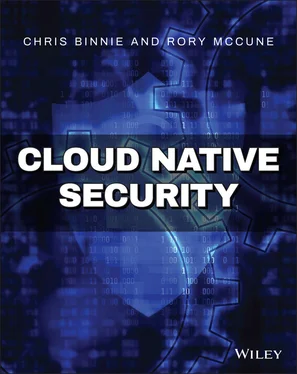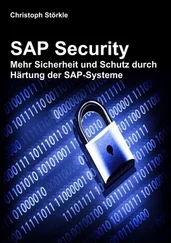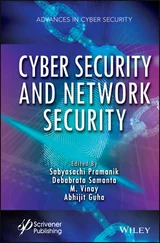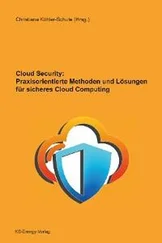Insomnia-inducing concerns aside, the good news is that it is possible to increase the effort involved for an attacker to successfully exploit a vulnerability significantly. This can be achieved using a combination of open source tools and shifting security to the left in the software lifecycle in order to empower developers with greater visibility of threats and therefore giving them more responsibility for the code that makes it into production.
Shifting security to the left, as championed by DevSecOps methodologies, is a worthwhile pursuit, especially when coupled with the interjection of security logic gates into CI/CD pipelines that determine whether to pass or fail software builds. Combined with multiple build tests, wherever they might be needed within the software lifecycle, this approach is highly effective and has been growing in popularity exponentially.
The authors of Cloud Native Security have both worked in the technology and security space for more than 20 years and approach such challenges from different perspectives. For that reason, this book is divided into four distinct sections that together will arm the reader with enough security tooling knowledge, coupled with niche know-how, to improve the security posture of any Cloud Native infrastructure.
The key areas explored in detail within this book are the high-level building blocks already mentioned in the introduction. Part Ifocuses on container runtime and orchestrator security, Part IIon DevSecOps tooling, Part IIIon the securing and monitoring cloud platforms, and finally Part IVlooks at advanced Kubernetes security.
There is ostensibly less Linux hardening information in this book than the other facets because Linux is more mature than the other components in a Cloud Native stack, fast approaching its 30th birthday. However, it would be unfair not to mention that almost every component involved with Cloud Native technologies starts with Linux in one shape or form. It is an often-overlooked cornerstone of security in this space. For that reason, a chapter is dedicated to ensuring that the very best advice, based on industry-consensus, is employed when it comes to using automation to harden Linux.
Today's popular cloud platforms are unquestionably each different, but the security skills required to harden them can be transposed from one to another with a little patience. Amazon Web Services (AWS) is still the dominant cloud provider, so this book focuses on AWS; readers working on other cloud platforms, however, will find enough context to work with them in a similar manner. From a Linux perspective, the hands-on examples use Debian derivatives, but equally other Linux distributions will match closely to the examples shown.
Coverage of container security issues often incorrectly focuses solely only on static container image analysis; however, within this book readers will find that the information relating to container runtime threats are separated away cleanly from orchestrator threats for much greater clarity.
This book explores concepts and technologies that are more accessible to less experienced readers within the first three sections. And, on a journey through to the last section where more advanced attacks on Kubernetes are delved into, the latter chapters are constructed to help encourage the reader to absorb and then research further into the complex concepts.
It is the hope that security professionals will gain a diverse mix of the required niche knowledge to help secure the Cloud Native estates that they are working on. Equally, as today's developers are consistently required to learn more about security, they too can keep abreast of the challenges that their roles will increasingly involve.
With this in mind, it has been an enjoyable experience collecting thoughts to put them down on paper. The reader's journey now begins with a look at the innards of a Linux container. Not all DevOps engineers can confidently explain what a container is from a Linux perspective. That is something that this book hopes to remedy, in the interests of security.
What Does This Book Cover?
Here's a chapter-by-chapter summary of what you will learn in Cloud Native Security :
Chapter 1: What Is A Container? The first chapter in Part I discusses the components that comprise a Linux container. Using hands-on examples, the chapter offers the perspective of these components from a Linux system's point of view and discusses common types of containers in use today.
Chapter 2: Rootless Runtimes This chapter looks at the Holy Grail of running containers, doing so without using the root user. An in-depth examination of Docker's experimental rootless mode, followed by an in-depth look at Podman being run without using the superuser, helps demonstrate the key differences between the runtimes.
Chapter 3: Container Runtime Protection This chapter looks at a powerful open source tool that can provide impressive guardrails around containers. The custom policies can be used to monitor and enforce against unwanted anomalies in a container's behavior.
Chapter 4: Forensic Logging This chapter examines a built-in Linux Auditing System that can provide exceptional levels of detail. Using the auditing system, it is possible to walk, step-by-step, through logged events after an attack to fully understand how a compromise was successful. In addition, misconfigurations and performance issues can be identified with greater ease.
Chapter 5: Kubernetes Vulnerabilities This chapter looks at a clever tool that uses a number of detailed checks to suggest suitable security and compliance fixes to Kubernetes clusters. Such advice can be useful for auditing both at installation time and in an ongoing fashion.
Chapter 6: Container Image CVEs By using the best of three Common Vulnerability and Exploit scanning tools, or a combination of them, it is possible to capture a highly detailed picture of the vulnerabilities that require patching within static container images.
Chapter 7: Baseline Scanning (or, Zap Your Apps) This chapter is the first of Part II, “DevSecOps Tooling,” and explores the benefits of performing baseline tests within a CI/CD pipeline to highlight issues with applications.
Chapter 8: Codifying Security This chapter demonstrates a tool that can utilize popular attack applications using custom policies to test for vulnerabilities within newly built services and applications in CI/CD tests.
Chapter 9: Kubernetes Compliance This chapter details a tool that is compatible with CI/CD tests that will inspect a Kubernetes cluster using hundreds of different testing criteria and then report on suitable fixes to help with its security posture.
Chapter 10: Securing Your Git Repositories This chapter looks at two popular tools to help prevent secrets, tokens, certificates, and passwords from being accidentally stored within code repositories using the git revision control system. Both suit being called from within CI/CD pipelines.
Chapter 11: Automated Host Security This chapter explores an often-overlooked aspect of Cloud Native security, the Linux hosts themselves. By automating the hardening of hosts either once or by frequently enforcing security controls, using a configuration management tool like Ansible, it is possible to help mitigate against attackers gaining a foothold and additionally create predictable, reliable, and more secure hosts.
Chapter 12: Server Scanning With Nikto This chapter offers a valuable insight into a tool that will run thousands of tests against applications running on hosts in order to help improve their security posture. It can also be integrated into CI/CD pipeline tests with relative ease.
Chapter 13: Monitoring Cloud Operations The first chapter of Part III, “Cloud Security,” suggests solutions to the day-to-day monitoring of cloud infrastructure and how to improve Cloud Security Posture Management (CSPM). Using Open Source tools, it is quite possible to populate impressive dashboards with highly useful, custom metrics and save on operational costs at the same time.
Читать дальше












